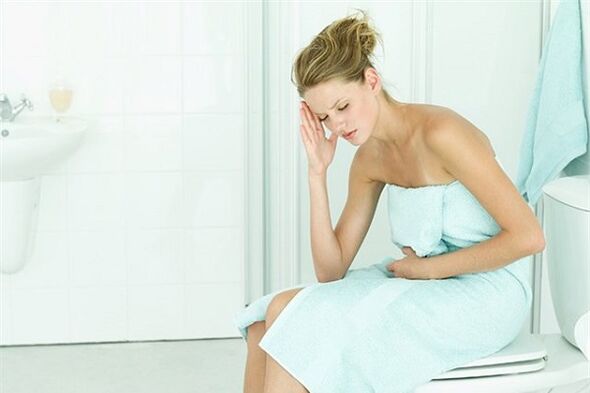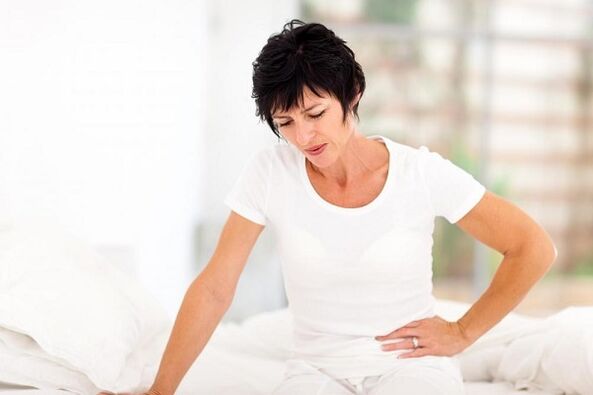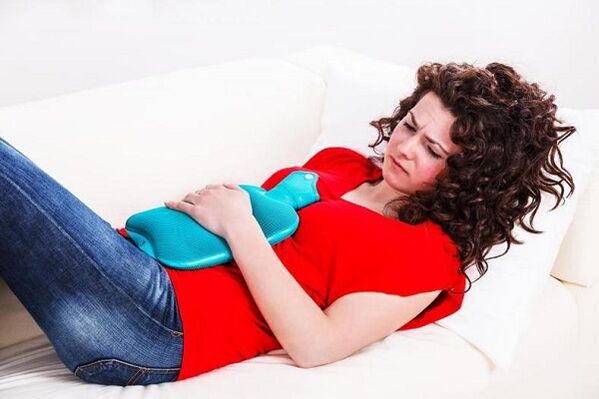Inflammation of the bladder is infectious and causes many unpleasant symptoms, where we can distinguish between stretching pain on the pubic bone, frequent but ineffective urination and blood impurities in the urine. Women's bladder needs to be empty more frequently than men. Organs are vulnerable to viruses and bacteria. The clinical manifestations of each person may vary depending on many factors: process localization, pathogen, nature of the disease, severity. What causes the appearance of cystitis, how it manifests, and what threats how to fight correctly?
Causes of cystitis in women

In most cases, the cause of this disease is microorganisms, for example, which are natural residents in our bodies, which applies to E. coli. Conditionally pathogenic microbiota under the control of immunity, which immunity controls the growth and number of microorganisms. If certain factors fail during the operation of the immune system, the conditional pathogenic bacteria may be out of control and lead to an inflammatory response.
Women are susceptible to cysts due to the following reasons:
- close location between vagina and anus;
- The urethra is wide and short.
There are several ways to penetrate the pathogen into the bladder cavity:
- rise. Infection penetrates from the urethra;
- decline. microorganisms that penetrate from the kidneys;
- Lymphogenesis. Pathogens spread from pelvic organs;
- hematoma. This method is very rare. This means that infection brings blood flow to some organs.
Although most often cystitis occurs in the context of other diseases, in some cases the disease can develop in an isolated process. The reasons may be the following factors:
- Violation of intimate hygiene rules;
- Chronic constipation;
- avitaminiso;
- with children and labor;
- surgical intervention in urine;
- Have a cold, have a low body temperature, sit on a cold surface;
- Nutritional errors, especially salt abuse;
- The randomness of sexual activity, and the partner changes frequently;
- Kidney disease;
- Hormonal imbalance;
- disease that leads to weakened immunity;
- Injuried;
- Wear compressed synthetic underwear.
Cystitis is often a complication of this disease:
- Bacterial vaginosis;
- Candidiasis;
- Sexual diseases: gonorrhea, chlamydia, urethral plastid disease, mycoplasma disease.
Sometimes, even taking medications, especially cell inhibitors, can cause inflammation of the bladder mucosa. Sometimes, even an allergic reaction can be used as a trigger for inflammation.
The first sign of cystitis in women
At the beginning of the disease, the first sign of cystitis in women is a change in urine color. It gets a specific odor, cloudy. The calls for urination are becoming more and more frequent. Urination itself is accompanied by unpleasant feelings: discomfort or burning. The temperature may rise, but it is not a mandatory sign.
On the first sign of cystitis, one or another approach requires concern and engaging in the treatment of the disease.

Types of cystitis in women
Depending on the nature of the inflammatory process, the disease can be of two types:
- Acute cystitis;
- Chronic cystitis.
Cystitis differs in morphological changes:
- Qatahal;
- ulcer;
- Cystic
- bleeding;
- ulcers and others.
Depending on the cause, the disease is bacteria, viruses, fungi, not bacteria. The following bacteria can cause cystitis:
- E. coli;
- Gonorrhea;
- Diapers;
- Mycobacterium;
- Staphylococcus or Streptococcus;
- Mycoplasma.
Conversely, not bacterial cystitis is divided into:
- allergy
- Drugs;
- Chemical
- rays;
- Toxic.
Symptoms of cystitis in women
In most cases, women have a sharp start to cystitis, and suddenly start:
- Frequent urge to urinate;
- Pain, rubber, burning;
- Involuntary urinary incontinence;
- The desire to clear the bladder at night;
- During urination, women put in a lot of effort and push.
- The pain occurs in the pubic and perineal areas. Sometimes, they get unbearable cuts in nature.
- Heat therapy;
- General well, deterioration of weakness;
- Urina obtained a muddy color of purulent nature;
- hematuria.
Complications of cystitis in women
Complications of cystitis include:
- hematuria. In some cases, bleeding may occur;
- Interstitial cystitis. The bladder wrinkles are reduced in size and their functional activities are seriously violated.
- Pyelonephritis. The spread of the infection process along the ascending path may threaten the emergence of inflammatory responses to the kidney structure.
Cystitis in women's blood
Usually, urine has a light yellow color. Hematuria can cause the tone of the bladder muscle tissue to be reduced, violate blood circulation or fail to empty the bladder for a long time. According to statistics, cystitis grows into a chronic form in 60% of cases. The main mistake is tightening! The earlier the treatment of cystitis, the better.
The presence of hematuria may indicate that the development of cystitis poses a threat to the patient's life:
- Bleeding. The walls of blood vessels are affected and they become fragile. Most often occur in the form of introduction of adenovirus or fungi as well as complications of radiation diseases.
- gangrene. In fact, the tissue of the bladder dies. Gangrenosus cystitis is dangerous due to the development of blood poisoning. The reason for this condition may be the presence of certain drugs or foreign bodies.
- ulcer. Related to the effect of radial direction on tumor process. Often there will be a large amount of bleeding that threatens death.
Cystitis in the blood is accompanied by this symptoms:
- false urination;
- The pain becomes so unbearable that women receive pain medication.
- Pain in the lower abdomen is deprived of sleep and rest.
- The temperature rises sharply;
- Spontaneous urination.

There are several types of hematuria:
- Micro-level. The blood is discharged insignificantly. The patient may not even notice this, but blood was detected in a laboratory test. In most cases, micro hairs indicate an intensification of chronic cystitis at the beginning of the inflammatory process. Sometimes, symptoms indicate the presence of injury in the genital field.
- Macroscopic. The bleeding becomes abundant in nature, which is unnoticed. The urine turns scarlet.
Nevertheless, the appearance of blood in the urine is a symptom that indicates a serious violation, so it is important to consult an expert. Hematuria is dangerous for the occurrence of this complication:
- spread other types of infection;
- Violating bacterial balance;
- Development of urinary diseases, especially urethritis;
- Blood clots can clog the urethra, thereby highlighting the urine.
- stretching and damaging the walls of the bladder;
- Urinary incontinence;
- The yearlyization of the process.
Diagnosis of cystitis in women
The diagnosis is based on clinical and laboratory data, as well as echo and endoscopy. Pato's therapy test is very painful.
In general urine analysis, it was found that the content of red blood cells and white blood cells was increased, including protein, mucus, and bacteria. The bacterial seeding in urine is characterized by the abundant growth of pathogens.
Make sure to have an ultrasound of the bladder. Cystoscopy allows you to identify the morphology of organ damage and to identify stones. Foreign bodies and tumors.
Treatment of cystitis in women
Cystitis requires integrated treatments. Unpleasant symptoms may spread within a few days when taking a tablet, but the infection can be hidden and "exposed teeth" at the right time.
Pills taken from cystitis should be combined with dietary nutrition. The essence of diet is to create gentle conditions for patients. Do not irritate acute, salty, pickled foods, especially alcoholic bladder inflammation mucosa.
But drink as much liquid as possible. Therefore, you help excrete the pathogenic bacteria and make urine, which can be troubled by the inflamed organs.
The basic principles of cystitis treatment in women include the following:
- Struggle with the infection process;
- Relieve inflammatory responses;
- Eliminate pain;
- Strengthen immunity;
- Save diet and drink abundance.
Cystitis drugs for women
You can forget about cystitis using this type of medication:
- Antibacterial;
- counter-spread;
- Probiotics;
- nonsteroid anti-inflammatory;
- Plant reaction.
antibiotic
After receiving data on urine seeding and identifying drug sensitivity, the doctor engages in antibiotic selection. It is important to take antibiotic therapy until the end, otherwise the disease will recur after a period of time.
Plant reaction

The healing effect of herbs is difficult to overestimate. If earlier women collected, dried and insisted on herbs, then there was no urgent need in our time, because herbal preparations prepared for making were sold in pharmacies.
Plant therapy is not single, but is used in combination with antibacterial agents. They enhance the therapeutic effects of antibiotics and reduce the risk of adverse reactions.
Family therapy
Sometimes it is impossible to visit a doctor in the near future. These are exceptions and in all other cases it is important to consult a specialist when the first symptoms occur.
At home, you can cure cystitis in a gentle form, provided the disease is not accompanied by pain and hematuria. But even in this case, it is important to have a test and consult a urologist.
For women, it is very important to observe the bed rest. The female body should not be overworked, it should have the power to fight against disease.
Folk treatment
Non-traditional recipes allow you to cure cystitis without damaging its health. They are used as supplements to major drug therapies and are used with the consent of a doctor. Among the folk recipes for cystitis in women, the most common:
- Sit and take a shower. As a basis, you can take medicine for chamomile. The plant has anti-inflammatory properties, which will help relieve the symptoms of the disease. Pour the plants in boiling water and brew. After filtering the soup, add it to the water basin. After the surgery, you should wrap and lie down;
- cranberry. Cranberry juice will help eliminate the first symptom of cystitis, but it is a major manifestation of weakly expressed disease.
- Herb decoction. The series can be purchased with the pharmacy or prepared independently of such ingredients: Echinacea, Mint, St. John's wort, corn contaminants, pine buds, bear borders, flax seeds, chamomile, field tail, eucalyptus. Such collections have antibacterial and anti-inflammatory effects.
Prevent cystitis in women
The following simple suggestions will help prevent the disease:
- Ideally, there should be a sexual partner. In case of random connections, it is necessary to use condoms;
- Obey hygiene rules. It is best to keep the soap balanced with neutral acid and alkali;
- Emphasize the bladder in time and do not tolerate it;
- Try not to wear under the weather and do not sit in a cold place.
- Drink enough natural water;
- Don't wear too tight clothes. Things are laundry rooms for special occasions, but not clothes worn every day.
- Follow your diet and do not allow constipation. Eat foods containing fiber and lactic acid bacteria. kurag, plum, fresh cabbage has laxative effects.
in conclusion
Cystitis in women is a severe infectious and inflammatory disease that can cause great discomfort. This disease worsens the quality of life and harm. The threat of cystitis occurs severe complications and sometimes poses a risk to the patient's life. Undeveloped diseases lead to the spread of infectious processes and the transition from pathology to chronic forms.
Diagnosis is the first stage of the treatment process for cystitis in women. Self-diagnosis can lead to a wrong path, which is why you lose valuable time. Treatment of cystitis is involved in urologists. It includes drug therapy, folk therapy and dietary nutrition. Follow all medical advice, don't forget to prevent and stay healthy!
























